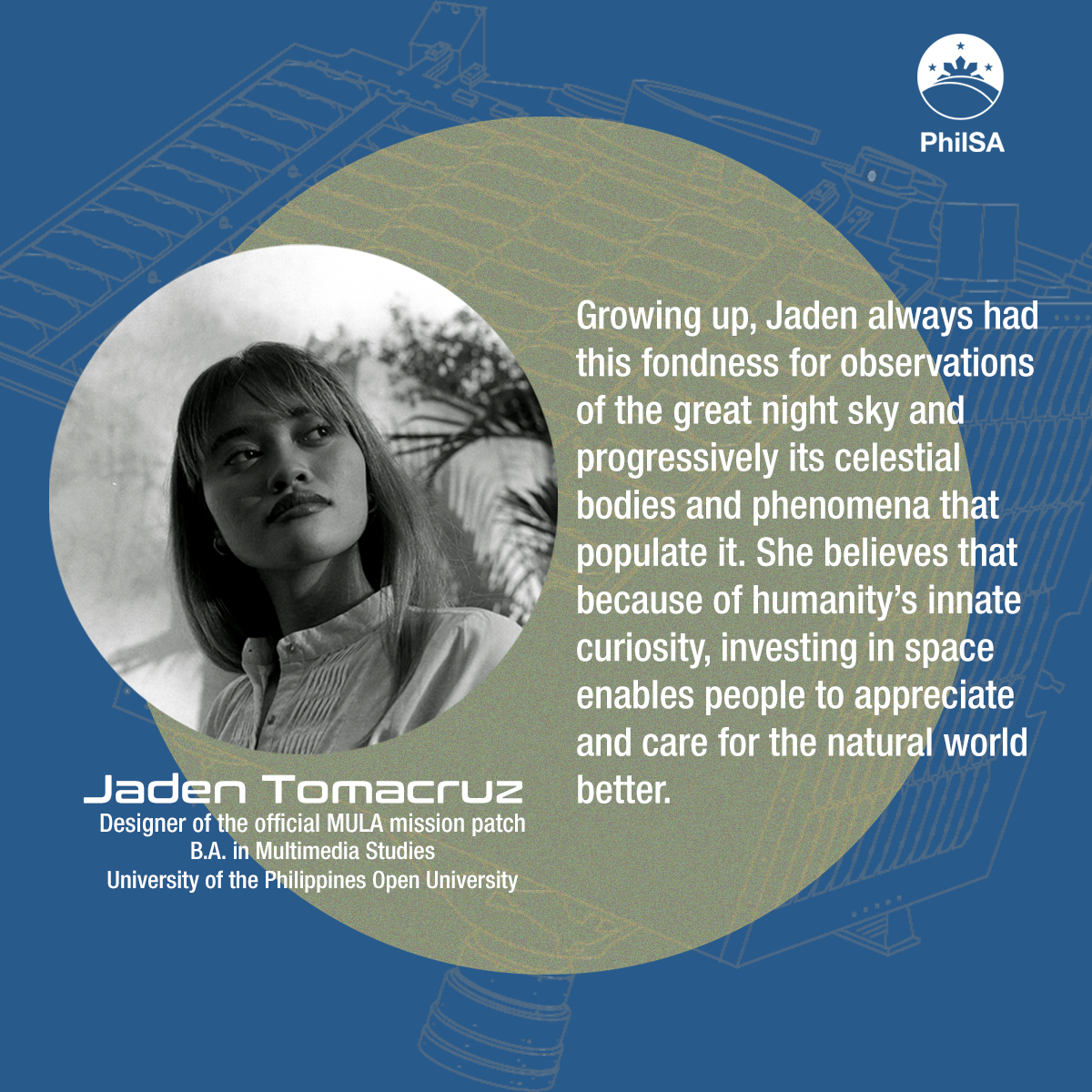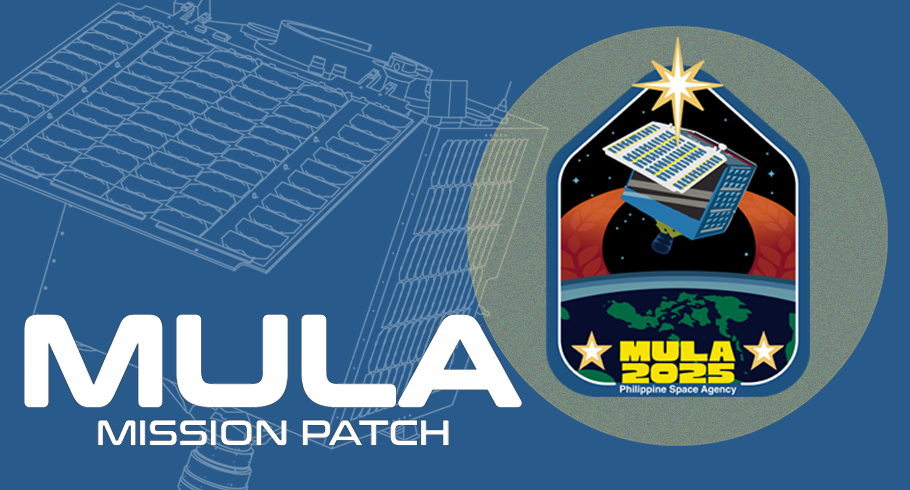The Philippine Space Agency (PhilSA) unveils the official mission patch of the Multispectral Unit for Land Assessment or MULA Satellite. Jaden Tomacruz, a 20-year-old Multimedia Studies student from the University of the Philippines Open University, created the mission patch. Jaden’s work bested 21 other entries in the MULA Mission Patch Contest opened in October 2022 during Design Week Philippines, in partnership with the Department of Trade and Industry – Design Center of the Philippines (DTI-DCP). The contest aimed to involve and inspire more Filipinos through the arts and design community to #JoinTheMission of MULA.
The entries underwent two (2) rounds of judging. A panel of judges composed of scientists from PhilSA, including MULA Satellite engineers, evaluated the mission patches based on relevance (35%), originality and creativity (20%), technical execution (20%), overall impact (20%), and audience impact (5%). The winner will receive P20,000.00 and a limited edition MULA plushie. All participants will also get the MULA plushie as a consolation prize.

Jaden Tomacruz, designer of the official MULA Mission Patch
About Jaden Tomacruz
Growing up, Jaden always had this fondness for observations of the great night sky and progressively its celestial bodies and phenomena that populate it. She believes that because of humanity’s innate curiosity, investing in space enables people to appreciate and care for the natural world better. Now, at 20 years old, she has utilized astronomy through the lens of creative expression in design, writing, and performance. She hopes to work in the space industry professionally as a creative individual and through her work, potentially spark more interest from the younger generation (like the way she did.)
About the MULA Mission Patch (authored by Jaden Tomacruz)
Visually, this patch design draws heavy inspiration from both Neo-Cubism Art and Abstract Minimalism present in modern Filipino painters. The color schemes used are a nod to previous mission patches. The shape, instead of being a circle, embodies a pentagon (can be a shield or crest) with rounded edges to signify the real testament of MULA’s future: wisdom, nationalism, and sovereignty. The three prominent stars are hoisted in a homogeneous position as the national flag though the top-most star shines with eight primary rays mirroring the golden-yellow sun in the flag.
The symbolism of disaster resiliency is conveyed through the surrounding arches of MULA, where it depicts an ever-present beaming fiery rising, even in the face of great adversity — there is hope to rebuild and revitalize. Alongside, a silhouette of strands of wheat is embroidered through it, in correlation with the long historical and cultural significance of rice production in the Philippines. Intrinsically, this satellite technology will help ensure, safeguard, and sustain the rich natural and human resources of the Philippines.
The typeface Cubao Free, popularly known as signboards hung on jeepneys, was used to manifest the amount of orbital commute MULA accomplishes. The bold presence is sensed as space research and development progress to the next generation of satellites. Furthermore, subtle likenesses of Balatik and Moroporo (constellations) allude to an acknowledgment of pre-colonization Filipino ethnoastronomy.
MULA is the biggest Earth observation satellite being built by the Philippines to date. It weighs 130 kilograms and carries a TrueColour camera capable of capturing 5 m resolution images covering around 73-thousand square kilometers in 24 hours. Data from MULA are envisioned to contribute to the country’s food security, disaster resilience, environment conservation, and national security.




